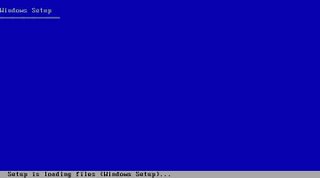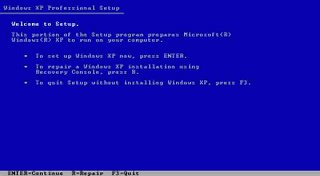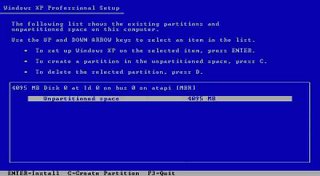Don't click!!!
How many times did you clicked it? :}
How many times did you clicked it? :}
Posted by
ISRalien
at
2:01 AM
0
comments
![]()
Labels: big red button, don't click, fun, funny, laugh, lol, red button, rofl, roflmao
These shortcuts are rather timesaving, and they've proven to be an important part in my PC experience :)
| Shortcut | What it does |
| CTRL and A | Selects all the items in the active window. |
| CTRL and C | Copies the item or items to the Clipboard and can be pasted using CTRL and V. |
| CTRL and F | Displays the Find all files dialog box. |
| CTRL and G | Displays the Go to folder dialog box. |
| CTRL and N | Displays the New dialog box. |
| CTRL and O | Displays the Open dialog box. |
| CTRL and P | Displays the Print dialog box. |
| CTRL and S | Displays the Save dialog box. |
| CTRL and V | Pastes the copied item or items from the Clipboard. |
| CTRL and X | Cuts the item or items selected to the Clipboard. |
| CTRL and Z | Undoes the last action. |
| CTRL and F4 | Closes the active document window. |
| CTRL while dragging an item | Copy the selected item |
| CTRL+SHIFT with arrow keys | Highlight a block of text |
| CTRL+F4 | Close the active document |
| CTRL+ESC | Display the Start menu |
| CTRL and F6 | Opens the next document window in the active application. |
| ALT+ENTER | View the properties for the selected item |
| ALT+F4 | Close the active item, or quit the active program |
| ALT+SPACEBAR | Open the shortcut menu for the active window |
| ALT+TAB | Switch between the open items |
| ALT+ESC | Cycle through items in the order that they had been opened |
| F1 key | Gives help on the active window or selected item. |
| F2 key | Rename the selected item |
| F3 key | Search for a file or a folder |
| F4 key | Display the Address bar list in My Computer or Windows Explorer |
| F5 key | Update the active window |
| F6 key | Cycle through the screen elements in a window or on the desktop |
| F10 key | Activate the menu bar in the active program |
| Windows Logo | Display or hide the Start menu |
| Windows Logo+BREAK | Display the System Properties dialog box |
| Windows Logo+D | Display the desktop |
| Windows Logo+M | Minimize all of the windows |
| Windows Logo+SHIFT+M | Restore the minimized windows |
| Windows Logo+E | Open My Computer |
| Windows Logo+F | Search for a file or a folder |
| CTRL+Windows Logo+F | Search for computers |
| Windows Logo+F1 | Display Windows Help |
| Windows Logo+ L | Lock the keyboard |
| Windows Logo+R | Open the Run dialog box |
| Windows Logo+U | Open Utility Manager |
| TAB | Move forward through the options |
| SHIFT+TAB | Move backward through the options |
| CTRL+TAB | Move forward through the tabs |
| CTRL+SHIFT+TAB | Move backward through the tabs |
| ALT+Underlined letter | Perform the corresponding command or select the corresponding option |
| ENTER | Perform the command for the active option or button |
| SPACEBAR | Select or clear the check box if the active option is a check box |
| F1 key | Display Help |
| F4 key | Display the items in the active list |
| Arrow keys | Select a button if the active option is a group of option buttons |
| BACKSPACE | Open a folder one level up if a folder is selected in the Save As or Open dialog box |
| END | Display the bottom of the active window |
| HOME | Display the top of the active window |
| NUM LOCK+Asterisk sign (*) | Display all of the subfolders that are under the selected folder |
| NUM LOCK+Plus sign (+) | Display the contents of the selected folder |
| NUM LOCK+Minus sign (-) | Collapse the selected folder |
| LEFT ARROW | Collapse the current selection if it is expanded, or select the parent folder |
| RIGHT ARROW | Display the current selection if it is collapsed, or select the first subfolder |
Posted by
ISRalien
at
4:04 AM
1 comments
![]()
Labels: ctrl-c, keyboard, keyboard shortcuts, shortcuts, windows, windows xp, xp
This is what happens if Micro$oft takes over mozilla:http://www.msfirefox.com/
Lol merry christmas mr.Gates. Hope you get the joke and don't take the idea of taking over mozilla seriously!
Posted by
ISRalien
at
3:49 AM
0
comments
![]()
Labels: firefox, microsoft, ms, ms firefox
Firefox passed internet explorer for the past week on one of my sites, http://www.gpfbg.com (a forum in Bulgarian, about the get-paid-to-business).
The stats, provided by Google analytics show that 52.3% of the visitors for the past week (12.14.2006-12.20.2006) viewed the site through Firefox.
Internet explorer holds 37.7%, and the remaining 10% are divided by other browsers (opera, netscape, safari, etc).
Take that, Micro$oft.
Posted by
ISRalien
at
9:13 AM
2
comments
![]()
INTRODUCTION
Microsoft defrag, or disk defragmenter, is a software utility designed to help chronologically order the data on the hard disk drive. The theory behind defrag is to place each program together instead of scattered throughout the hard disk drive, allowing the read-write head to access the data faster on the hard disk drive. Windows 98 includes an improved version of defrag that is said to place the most commonly accessed data at the beginning of the drive, allowing the read-write head a shorter distance to access the data, making the computer faster. Generally, unless the hard disk drive is seriously fragmented, you will not notice a significant difference after defragging the hard disk drive.
Defrag was first available in MS-DOS 6.0 and was available ever since. If you are running MS-DOS 6.0+ and would like to run defrag, follow the below steps.
Finally, some computer manufacturers have changed the installation directory of where defrag is located if you are unable to run defrag from DOS directory, go to the WINDOWS directory by typing CD\WINDOWS.
WINDOWS 95/98 DEFRAG
Windows 95 improved the functionality of defrag as did Windows 98; to run defrag from Windows, follow the below steps.
Just as in Windows 95 and Windows 98, Windows ME includes the same steps to run defrag.
Keep in mind that Windows 2000 and XP are network operating systems, and that if you are a user using Windows 2000 or XP on a network, your network administrator may have restricted users from running defrag or from having any direct disk access. To run defrag, we recommend you follow the below steps.
Posted by
ISRalien
at
8:49 AM
1 comments
![]()
I'm gonna describe here how to install Windows XP Professional edition, step by step, from a bootable CD.
1. Start the computer from the CD.
2. You can press F6 if you need to install additional SCSI adapters or other mass-storage devices. If you do you will be asked to supply a floppy disk with the drivers and you CANNOT browse it (or a CD for that matter). Make sure you have one handy.
3.Setup will load all the needed files and drivers.
4.Select To Setup Windows XP Professional Now. If you want, and if you have a previous installation of XP, you can try to fix it by pressing R (only if you know what to do in the recovery console). If not, just press ENTER.

5.Read the licensing agreement and press F8 if you accept it.

6.Select or create the partition on which you will install Windows XP Professional. Depending upon your existing disk configuration choose one of the following:



If the hard disk is already partitioned, but has enough unpartitioned disk space, you can create an additional partition in the unpartitioned space.
If the hard disk already has a partition that is large enough, you can install Windows XP Professional on that partition. If the partition has an existing operating system, you will overwrite that operating system if you accept the default installation path. However, files other than the operating system files, such as program files and data files, will not be overwritten.
If the hard disk has an existing partition, you can delete it to create more unpartitioned space for the new partition. Deleting an existing partition erases all data on that partition.
Posted by
ISRalien
at
2:56 PM
0
comments
![]()
Most desktop PCs run comfortably when their internal temperature is between 16 and 43 degrees Celsius. Internal temperatures over 43 degrees can stress delicate circuits and electrical contacts, which may substantially shorten your computer's life. Hard drives are especially vulnerable when the temperature goes up: Data transfers slow down, and data written to the disk is more likely to be lost. Here's how to beat the PC heat:
Big amplitudes: The biggest temperature changes occur when you turn your system on and off, so leave your PC on but use its power-management functions to keep its innards as cool as possible when it's idle.
Fans:
The primary air mover in most PCs is the power-supply fan, although some systems have an additional ventilation fan built into the case. Even in relatively clean offices, dust can accumulate on the fan intakes and seriously obstruct airflow. Clean your PC's fans and fan intakes regularly, especially if you hear a change in the fans' one-note whir. If your CPU's fan or heat sink stops functioning properly, a CPU failure won't be far behind.
Monitor your temperatures: There are many programs which can show you the CPU and Chipset temperatures, as well as the fan speeds, but some of them don't support your hardware, so in most cases they won't show the correct values. The BIOS shows the most correct values, because it's built especially for your mainboard.
Posted by
ISRalien
at
2:08 AM
0
comments
![]()
Do you have to wait several minutes until your computer boots up your windows OS?
This is usually caused by a lot of processes running when windows start.
To reduce the time needed to boot up the entire system you would have to remove some/most of them. Do you have lots of icons in your taskbar next to the clock? These are programs, running in the computer's memory, which use some/a lot of resources. Most of these processes start when you boot up your computer.
To remove them from the system start-up you would have to do these things:
First, open the start menu. Then in ("All programs" for Windows XP, and "Programs" for Windows 9x) go to "Startup" and see if any of the unwanted programs are there. In windows 98se, ME, 2000 and XP you can just right click on the unwanted application and choose "delete", but for windows 95 you have to open C:\Windows\Start menu\Programs\Startup (assuming C:\Windows is your windows installation directory) to delete the programs from the windows startup.
Second: Some of the programs aren't showing up in the "start-up". You'll have to do the following:
Press the start menu and click "Run" then type "msconfig" and click "OK"
A little window will show up. Click on the "Startup" tab, and just uncheck the unwanted applications. Be careful though, as some of these processes are critical for the system.
Posted by
ISRalien
at
10:37 AM
0
comments
![]()